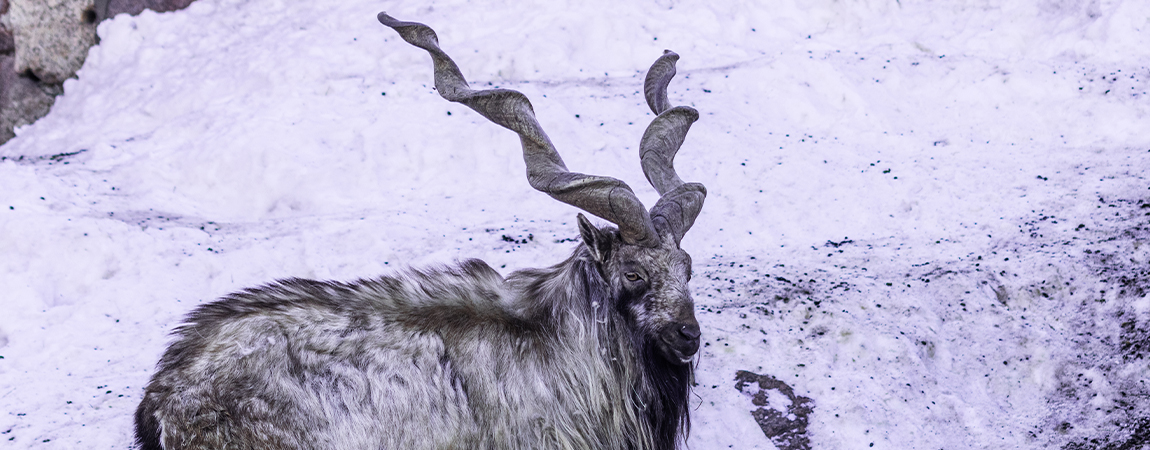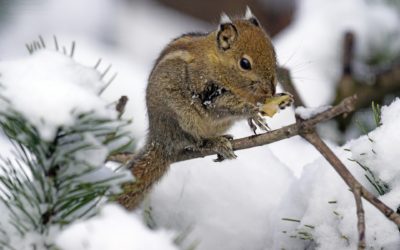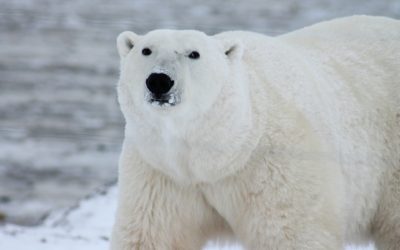The markhor – Scientific name: Capra falconeri -is a species of wild goat that is native to southern Tajikistan, northeastern Afghanistan, southern Uzbekistan, Turkmenistan, northern and central Pakistan, Kashmir in northern India and the Himalayas. This noble looking creature, with its majestic horns, is one of the largest members of the goat family and was considered as an endangered species in 2015, because of hunting and poaching activities. Active conservation efforts of the last few decades have resulted in the increase of the population of Markhor in the wild.
Markhor are very agile and they generally prefer steep, stony mountain sides or precipitous grassy slopes. They are usually found at altitudes between 500 to 3500 feet.These diurnal – (active during the day, with a period of sleeping, or inactivity, at night) – animals spent their summer time in higher altitudes and winter at lower altitudes. The perilous terrain that they inhabit made hunting them a real challenge and they were regarded as the ‘greatest prize of Himalayan hunters‘ during the nineteenth century.
Facts about Markhor
- These wild goats have a body length of 4.4 – 6.2 feet and stand 2.1 – 3.8 feet at the shoulder.
- Fully grown markhors can weigh in at around 110 kilograms.
- Both male and female markhors have light brown to black colored coat, which is often streaked with grey, and have black & white markings on the lower legs.
- The appearance of the coat varies with the seasons. They are smooth and short in summer and will grow thick and longer during the winter season.
- One of the most noticeable features of the markhor is their curled, corkscrew shaped horns, which can grow up to 160 cm in males and 25 cm in females.
- Markhors subsist on a diet of grass, plants, leaves and other vegetation. They resort to grazing – feeding on growing grass and pasturage– during spring and summer, but feeds by browsing – feeding on leaves, twigs, or other high-growing vegetation – during winter.
- Markhors become mature for reproduction when they are around 20-30 months and they have a gestation period of 135 -170 days.
- Kashmir Markhor (Capra falconeri cashmiriensis), Astor Markhor (Capra falconeri falconeri), Bukharan Markhor (Capra falconeri heptneri), Suleiman Markhor (Capra falconeri jerdoni) and Kabul Markhor (Capra falconeri megaceros) are the five sub-species of markhor and the shape of their horns slightly differs.
- Wolves, Snow Leopards, Himalayan Lynxs and Black bears are some of the predators, which hunt the markhor.
- Markhors were once hunted widely by humans and were on the edge of extinction because of poaching and encroachment on their natural habitats. But conservation efforts like setting up of reservations, strict laws and awareness campaigns have worked positively towards the survival of these species.
- The Markhor is the national animal of Pakistan.
Did you know?
Among the local hill tribes in the Himalayas and the surroundings, the markhor is regarded as the snake-eater. The name is believed to have evolved from the Persian word mar, meaning snake and khor, which translates to eater. This is pretty strange considering these wild goats survive on a plant diet. Won’t you agree?






0 Comments